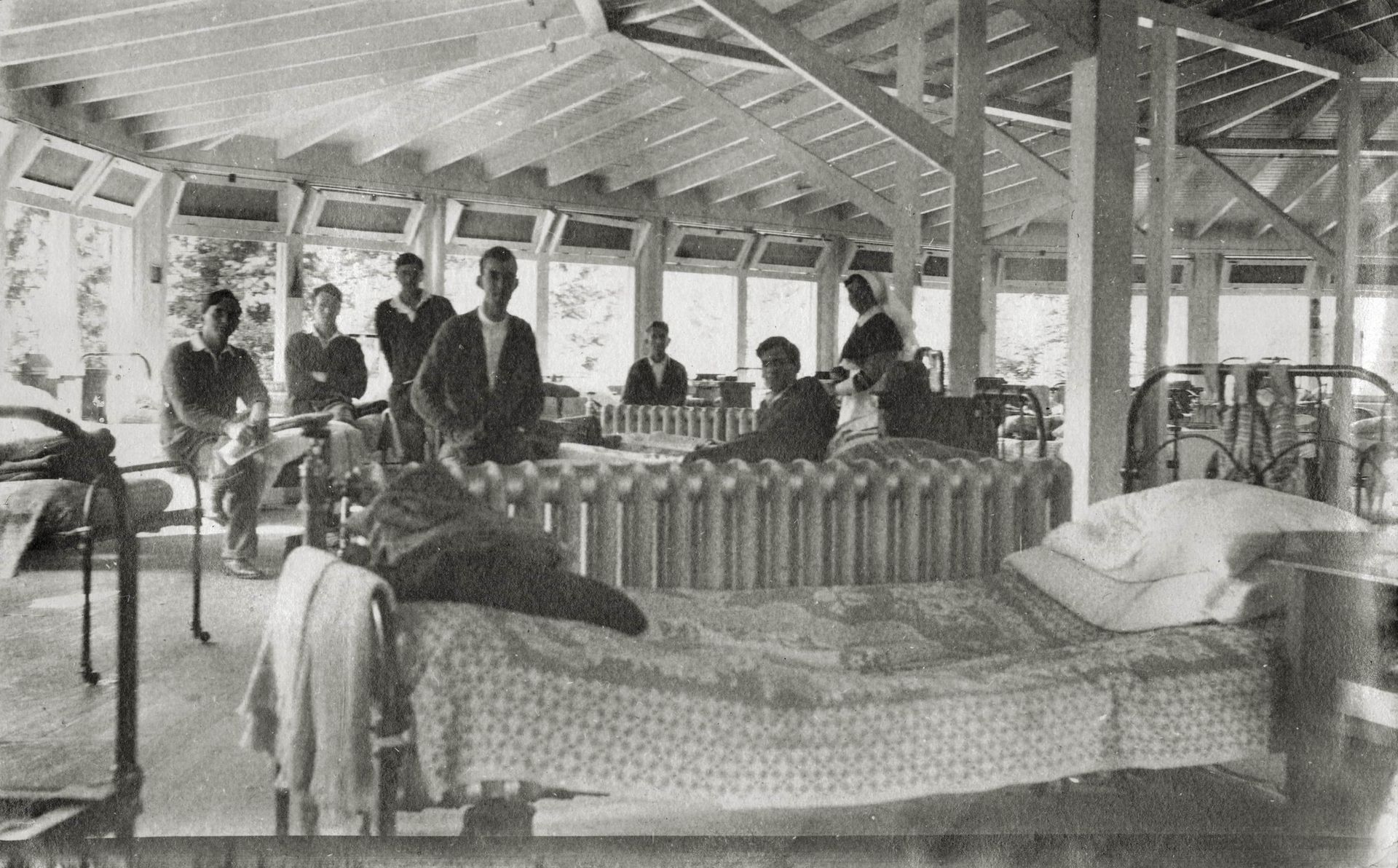Article
Meet Percy Morse
Trooper Percy Morse: One of the First to Heal at The Soldiers’ Block
In the century-long legacy of The Soldiers’ Block, there are names woven into its foundations—names that remind us why this place matters. One of those names is Trooper Percy Morse, a young carpenter from Christchurch who, like many others, carried the weight of war long after the battlefield fell silent.
A YOUNG MAN CALLED TO WAR
Born in Christchurch in 1894, Percy Morse was just 20 years old when he enlisted in 1914 as Trooper 7/752 in the Canterbury Mounted Rifles. Blue-eyed, soft-featured, and intelligent—he had already won the Dux medal at Waltham School and worked as a carpenter, likely learning the trade from his adopted father, Hugh Roberts.
Like so many of his generation, Percy responded to the call to serve without hesitation. He sailed to Egypt, trained under the desert sun, and was sent to Gallipoli in 1915, one of the most brutal chapters in New Zealand’s military history.
There, amidst the heat, mud, and relentless artillery fire, Percy suffered shell concussion, and possibly contracted enteric fever (typhoid). By July, he was medically evacuated and admitted to hospital in Cairo, before returning to New Zealand in October 1915.
ONE OF THE FIRST AT QUEEN MARY
In the months that followed, Percy was sent to convalesce in Hanmer Springs. Initially treated at “The Lodge,” a makeshift recovery home provided by local landowner Duncan Rutherford, Percy became one of the very first patients to walk through the doors of The Soldiers’ Block when it officially opened on 3 June 1916.
The young men, supported by “the Ladies of the district,” left The Lodge in a quiet procession and paraded down to the newly completed octagonal wards of the Queen Mary Hospital. For many—including Percy—it was a move not just between buildings, but toward hope and healing.
FINDING STRENGTH IN COMMUNITY
While recovering, Percy took part in the hospital’s many cultural activities. In July 1916, he performed mandolin selections during a patient concert—a moment of levity and light in the long journey home from war.
Just weeks later, Percy was officially discharged from military service. Rather than return to city life in Spreydon, he headed north to Barcaldine Station, a high-country sheep farm in Waiau.
There, perhaps through his connection to the Rutherford family, Percy found purpose again. He would go on to manage Leslie Hills estate and, in 1918, marry Mary Rutherford, the daughter of the man who had helped establish Queen Mary Hospital.
A LIFE REBUILT—BUT NEVER WITHOUT SHADOWS
Percy and Mary raised a family and became deeply embedded in their local community. Percy held leadership roles in organisations including the Hanmer Springs Progress League, Waiau Tennis and Football Clubs, A&P Society, RSA, and even chaired the Centennial Celebrations and Cemetery Board.
But the trauma of war never truly left him. He suffered from the long-term effects of shell shock, abdominal pain, recurring fevers, and deep depression. His grief was compounded in 1943, when his son Flying Officer Colin Morse was killed in WWII.
On 5 June 1944, just two days after the 28th anniversary of The Soldiers’ Block opening, Percy ended his own life at home in Hanmer Springs. He was 49 years old. He was taken back to Queen Mary Hospital—where his healing journey had begun—for the Coroner’s inquest. He is buried with Mary and their daughter Eva in the Waiau Cemetery.
REMEMBERING PERCY
Today, we remember Trooper Percy Morse not just for his service—but for his humanity. For the resilience he showed in war, the leadership he offered in peace, and the vulnerability he lived with every day.
He was a soldier, musician, father, community leader, and survivor. His story reminds us why The Soldiers’ Block exists—and why preserving its legacy is so vital.
For every name in a file, there was a life. For every wall in The Soldiers’ Block, a witness to pain, and to hope.
If you or your whānau have a connection to The Soldiers’ Block, we’d love to hear from you.
Email us at info@soldiersblock.co.nz
share this
Related Articles
Related Articles

stay up to date
A Journey to Recovery
Receive updates on progress, and get a heads up on upcoming events.
